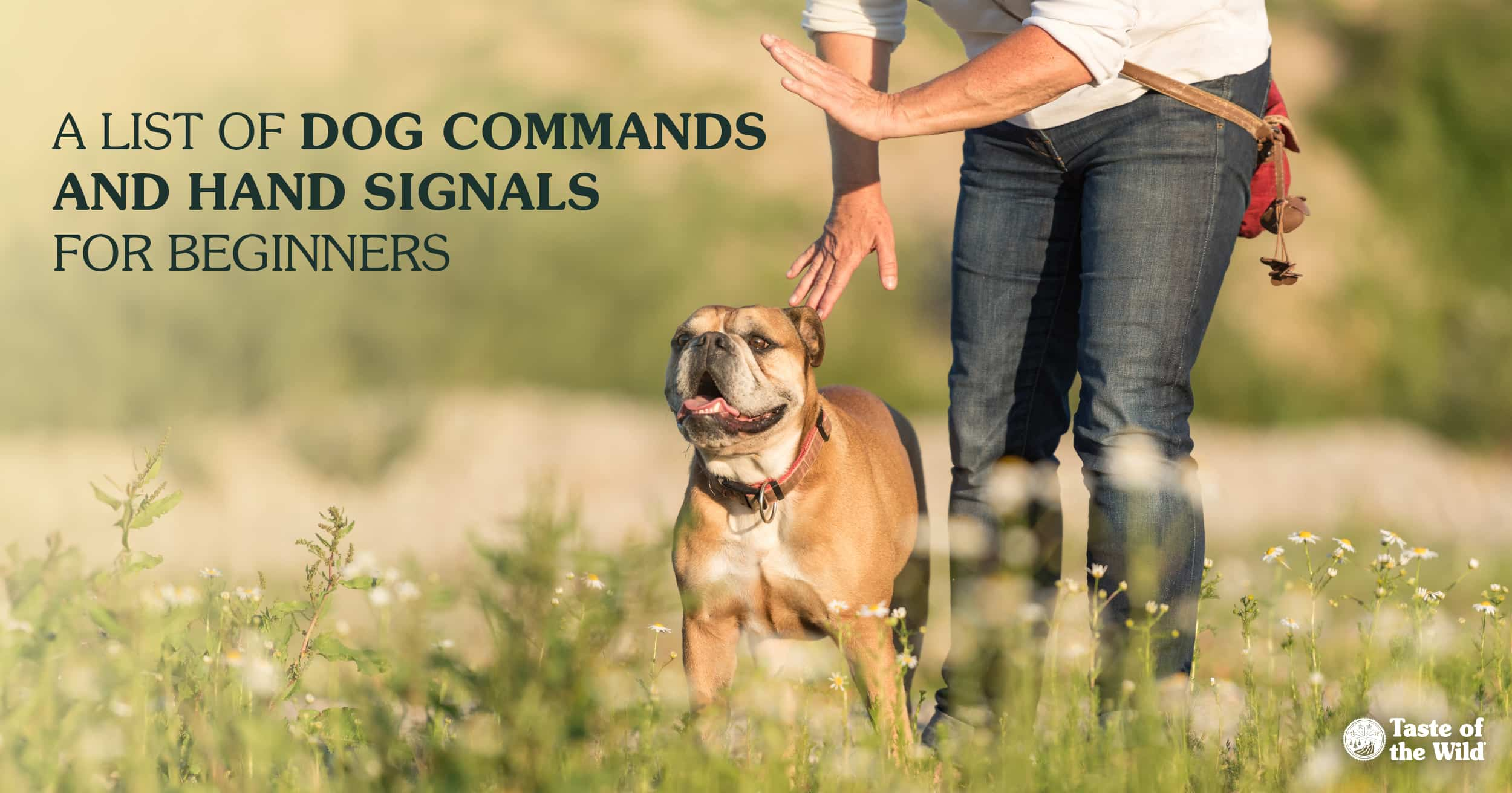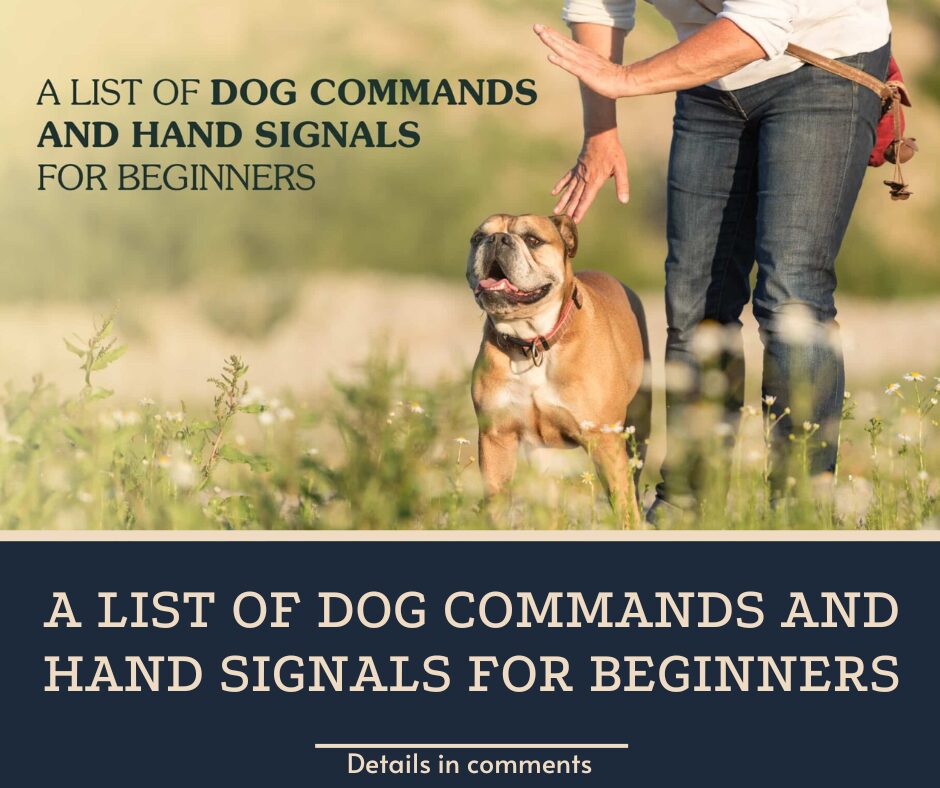
When you’re choosing how to train your dog, there are many things to consider, including which training method to use. Another decision to make is whether to teach your dog training hand signals. Dogs use body language to communicate with other dogs, so it makes sense that they can also use body language to communicate with us. It’s why most dogs respond well to hand signal training.
Why Should You Teach Your Dog Hand Signals?
There are many situations where a hand signal can come in handy. If you’re in a noisy environment where your dog can’t easily hear you (e.g., at the dog park with what seems like every dog in town), a hand signal allows your dog to see what you’re asking them to do. That way you’re not shouting or running after them until they hear you. Dog training hand signals are also useful for competing in dog sports like agility where your dog needs to pay attention to you in a very distracting environment where verbal communication is difficult.
Many dogs develop hearing loss as they age. By teaching them visual signals when they’re younger, you will still be able to communicate with them if they do become hard of hearing or deaf in their senior years. If your dog was born deaf or becomes deaf, they can learn to obey commands that are given by hand signals. The hardest part of training deaf dogs is getting their attention. Some of the methods we list in our article about caring for a deaf dog include broadly waving, stomping your foot or gently touching them in the same spot each time.
Can I Teach My Dog Hand Signals If They Know Verbal Cues?
Yes, if you have trained your dog to respond to verbal commands, you can still use hand signals for dog training. The first step is getting their attention — we have more on how to do that below. Once they’re looking at you, show them the hand signal, say the verbal command and, of course, give them lots of praise when they complete the task. Eventually you should be able to drop the verbal command and just show your dog the hand signal.
How to Teach Hand Commands for Dogs
Obviously knowing hand signals is pointless if your dog doesn’t look at you. So that’s the first task you need to teach your dog — “look at me.” To do this, get their attention by calling their name or stomping or broadly waving at them if they’re deaf. When they look at you, say “look” or another cue, and immediately reward them with treats, a toy or another reward (skip the verbal cue if they’re deaf). Keep repeating this and eliminate the reward when they’re looking at you consistently. The goal is that eventually your dog will regularly look at you to “check in” and, once trained with hand signals, will see if you’re using visual cues.
Praise is an important part of verbal cue training and it’s critical for hand signal training, too. It’s important to have a command that tells your dog that they have completed the command or desired behavior correctly, particularly if they are deaf or hearing impaired and they can’t hear you say “Good job.” This hand signal could be as simple as a thumbs up (closed fist with your thumb pointing upward).
If your puppy or dog is just beginning the training process and doesn’t know voice commands yet, lure-and-reward training can be useful to teach hand signals. This is where you use a lure (e.g., a treat or favorite toy) to help your dog learn what you’re asking them to do. For example, holding a treat in the palm of your hand and passing your hand over your dog’s nose toward the back of their head can encourage them to “sit.”
Just like any other training session, teaching hand signals should be done in a quiet area where your dog won’t be distracted. You should also keep your dog’s training sessions short so that your dog’s attention doesn’t wander.
Which Dog Training Hand Signals Should You Use?
You can use almost any hand signal for dog training, as long as you are consistent with the hand signals you use, they are easy to understand and your dog can see the signals at a distance. There aren’t really any standard dog training hand signals. Just make sure that whichever signals you choose, everyone in your household is using the same hand signal for each command and you stick with it. Don’t change the hand signal once you’ve started the training process.
Basic Hand Signals for Dogs to Learn
Below are seven basic commands that your dog should know, whether that’s verbal commands, hand signals or both. We have suggested some dog hand signals, but you can also use your own.
1. SIT
Hold your arm straight out. When you’re starting to teach “sit,” your hand will go above and over your dog’s nose, encouraging them to sit.
2. COME
Hold your arm straight out then bring it to your opposite shoulder. You could also use both arms and bring them to your chest.
3. STAY
Hold your arm out with your hand up like you’re telling someone to stop. Hold your arm at an angle to the ground so it’s directed toward your dog’s head.
4. HEEL
Tap your leg on the side you want them to heel on.
5. DROP OR LEAVE IT
Make a fist with your hand and hold it toward the ground. You could also open your hand.
6. DOWN
Hold your arm out straight and move your arm to the floor. You could also point to the floor with your index finger while you’re moving your arm down.
7. GOOD JOB
Make a fist with your thumb pointing upward (like you’re giving someone a thumb’s up).
Any type of dog training takes patience, practice and praise, but the end result is well worth it. You can even use hand signals to teach your dog fun tricks! Try teaching your dog to spin by moving your hand in a circular motion. Ask your dog to do this at a party without uttering a word, and your guests are sure to be impressed!
The information in this blog has been developed with our veterinarian and is designed to help educate pet parents. If you have questions or concerns about your pet’s health or nutrition, please talk with your veterinarian.
